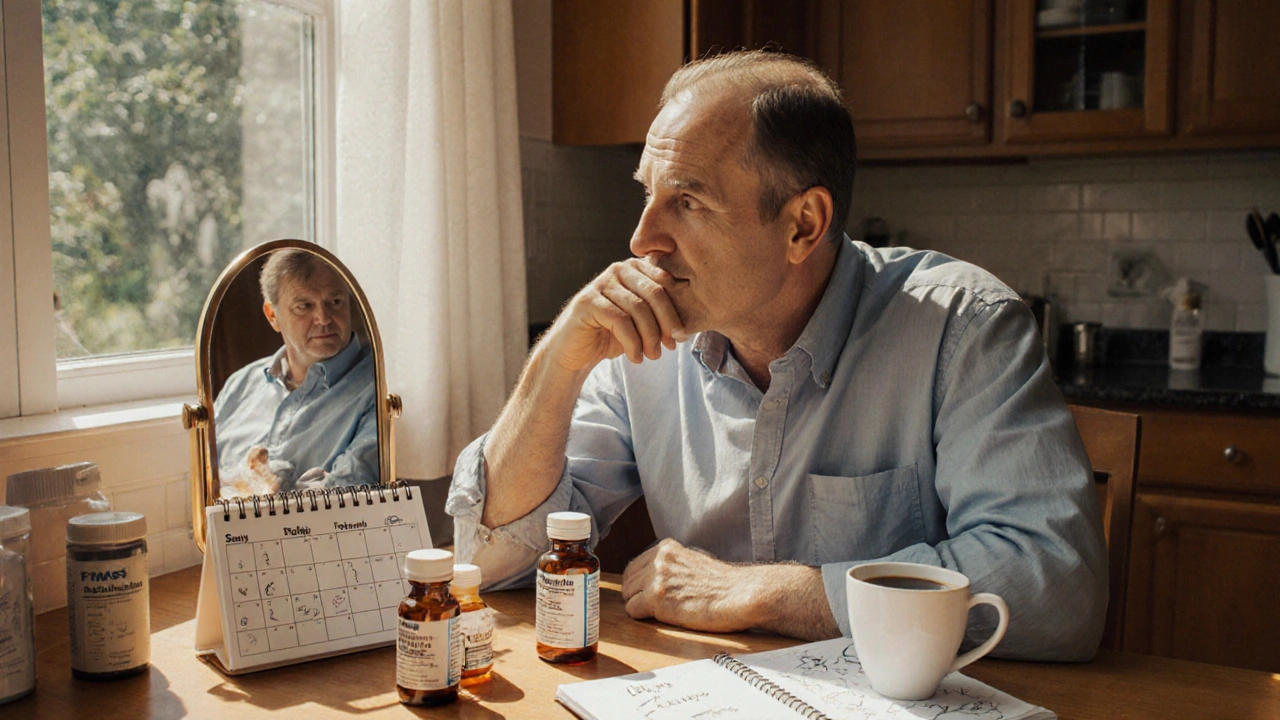Propecia: What It Is, How It Works, and What You Need to Know
When you hear Propecia, a brand-name medication containing finasteride, used primarily to treat male pattern baldness. Also known as finasteride, it's one of the few FDA-approved drugs that actually slows hair loss and can help regrow some hair in men. Unlike shampoos or supplements that promise results without proof, Propecia works by targeting the hormone behind hair thinning—dihydrotestosterone, or DHT. This isn’t just a cosmetic fix; it’s a medical approach backed by decades of clinical data.
Propecia doesn’t work for everyone, and it’s not for women or children. It’s designed for adult men experiencing male pattern baldness, which affects about 50% of men by age 50. The key thing to understand is that Propecia doesn’t cure baldness—it stops or slows the process. If you stop taking it, you’ll likely lose the hair you gained within 12 months. That’s why consistency matters. Side effects are rare but real: some men report lowered libido or erectile dysfunction, though studies show these affect fewer than 2% of users and often go away with time. It’s not a miracle pill, but for many, it’s the most effective option they’ve found.
People often compare Propecia to minoxidil (Rogaine), another common treatment. Minoxidil is applied topically and works by stimulating blood flow to the scalp. Propecia works from the inside by blocking DHT. Some men use both together for better results. Neither fixes hair loss overnight—it takes 3 to 6 months to see changes, and full results can take up to a year. If you’re not seeing progress after 12 months, it probably won’t work for you. There’s no point in spending more money or time on it.
What’s interesting is how many people don’t realize Propecia is also used to treat an enlarged prostate. The same mechanism that protects hair follicles from DHT also reduces prostate growth. That’s why generic finasteride is sold under different names for different uses. The dose for hair loss is lower—1 mg daily—while the prostate dose is 5 mg. Same drug, different purpose. Don’t confuse the two.
There’s a lot of noise online about natural remedies for hair loss—saw palmetto, pumpkin seed oil, scalp massages. Some of these might help mildly, but none come close to Propecia’s proven effectiveness. If you’re serious about keeping your hair, this is the most reliable option you’ve got. But don’t just buy it online without knowing where it’s from. Counterfeit pills are common. Always get it from a licensed pharmacy, even if it costs a little more.
Below, you’ll find real guides from people who’ve used Propecia, compared it to other treatments, and learned what works and what doesn’t. Some share their before-and-after results. Others talk about the side effects they faced—and how they handled them. You’ll also find comparisons with alternatives like minoxidil, dutasteride, and even hair transplants. This isn’t just theory. These are practical experiences from real users who’ve been through it. Whether you’re just starting to notice thinning or you’ve been fighting it for years, there’s something here that applies to you.
Compare Finast (Finasteride) with Alternatives for Hair Loss and BPH
Compare Finast (finasteride) with alternatives like dutasteride, minoxidil, and laser therapy for hair loss and BPH. See effectiveness, side effects, and which option works best for you.
Read





